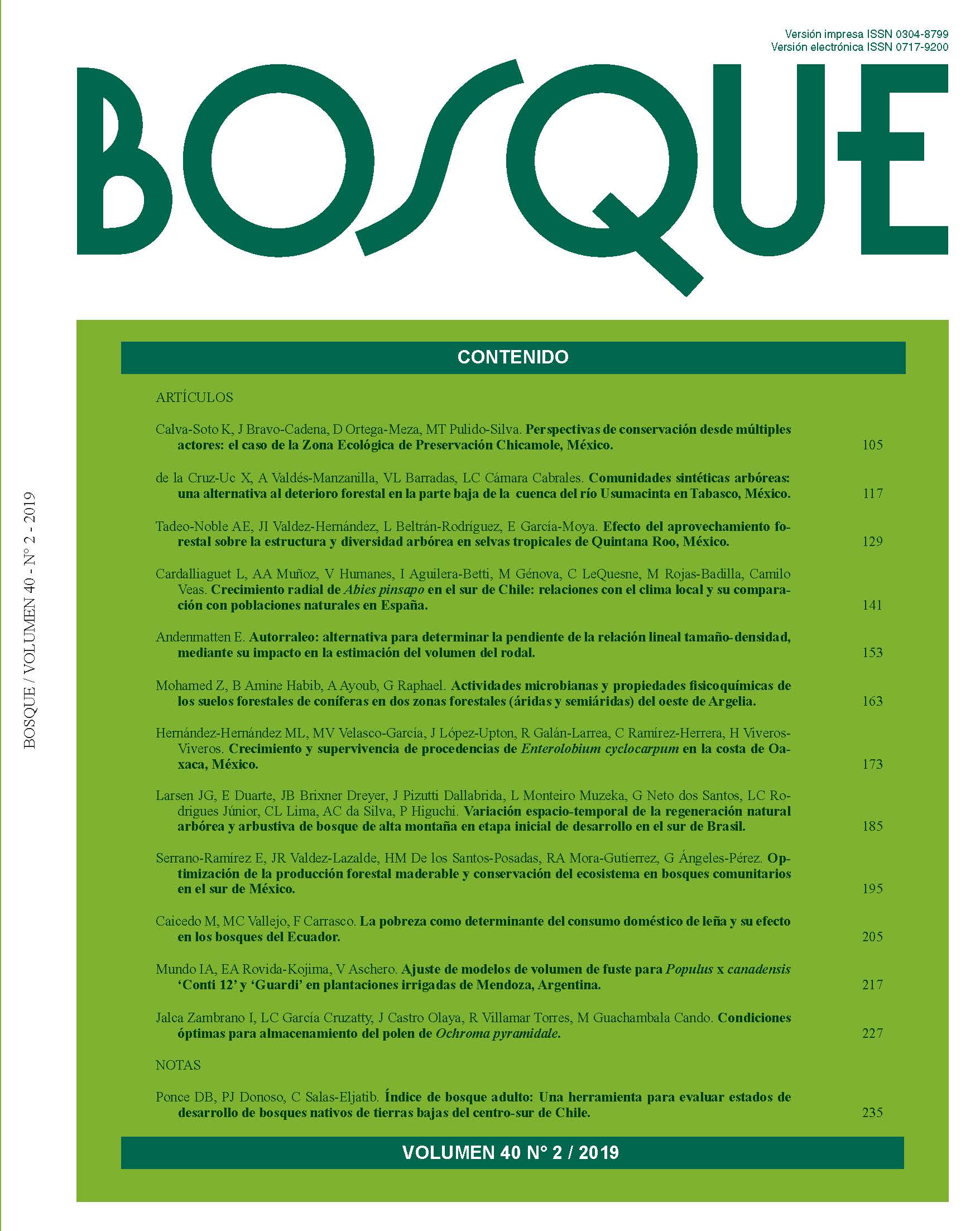Main Article Content
Aug 6, 2019
Abstract
A new methodology is presented to design synthetic arboreal communities, with emphasis on forest management in deforested regions. This methodology is based on the potential distribution of native tree species of Mexico in the lower part of the Usumacinta river basin in southeastern Mexico. The potential distributions of native species were obtained from the probability of occurrence calculated by the Maxent ecological niche model, using presence data, from an area delimited by the municipalities of Balancán and Tenosique, Tabasco, Mexico, which has had a strong deforestation in the last decades. A synthetic arboreal community is proposed for this study area, which consists of the five species that have the largest areas of potential distribution, according to the calculations made with a geographic information system, which covers a considerable area of the study region (1,951.9 km2), maximizing the reforested area. Two of the species studied are listed within some type of national or international standard on threatened species.


